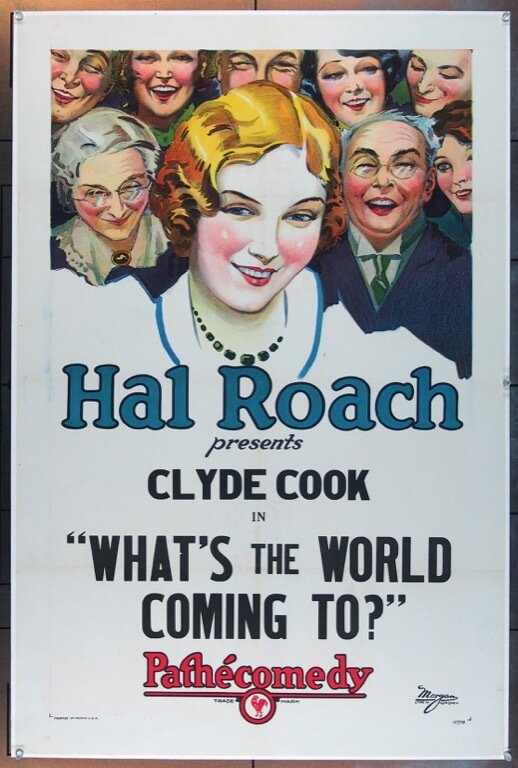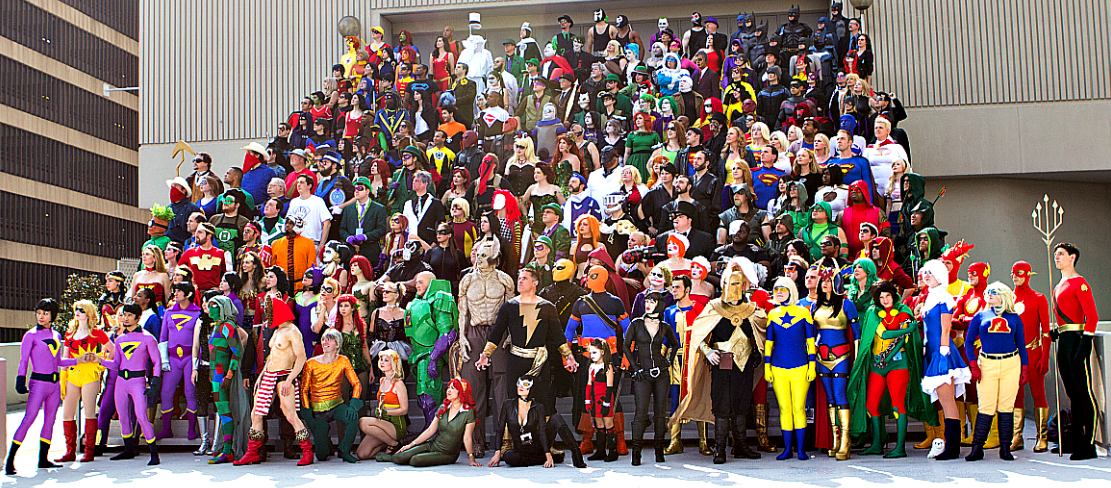Educomunicación: Dialogues on Latin American Media Education (Part One in a Series)
/Earlier this year, I had a Zoom conversation with Andres Lombana-Bermudez, a former student from my years at the MIT Comparative Media Studies Program who worked with Craig Watkins at the University of Texas-Austin for his PhD and who has returned to his native Columbia to do work on media literacy. He shared with me some writing he had done on the Educomunicación movement. These theories have had an enormous impact across Latin America but are little known in the global North. I instantly knew that I wanted to share some of these conversations through this blog. Andres reached out to other colleagues, including his co-editor on this series, Julio-César Mateus, a leading voice in the media literacy movement, to bring more South American voices into this conversation. And the results, you see before you. I will let them take the story from here.
Educomunicación: Dialogues on Latin American Media Education. (Introduction to the Series - Part 1)
By Julio-César Mateus, Ph.D. and Andres Lombana-Bermudez, Ph.D.
Media education and media literacies, as fields of knowledge and practice, continue to evolve in the 21st century through initiatives, programs and policies developed at global, national and local levels. In the past years, the context of the pandemic, characterized by the exacerbation of inequalities, proliferation of information disorders, and virtualization of many education and learning processes, has given these fields more relevance, as multiple stakeholders have explored ways to cope with the crisis. However, as media education and media literacies gain more attention around the world there is an urgent need to recognize them as an ecology of diverse knowledges and practices developed across different contexts. Particularly, there is a need to make visible approaches to media education and media literacies from the Global South that have not been fully included in the international and Global North debates, policies, curricula, and research. Due to the existing power asymmetries and epistemic hierarchies, some of the situated knowledge and practices developed in the Global South remain to be rediscovered.
This entry is the first of a series about "educomunicación," a media education movement from Latin America that has been developed and applied since the 1960s by scholars, activists and practitioners working in this region. The series is based on two webinars co-organized by Universidad de Lima (Peru) and Universidad Javeriana (Colombia) in May and June 2021, in where educomunicación researchers and practitioners from different Latinamerican countries got together to exchange ideas and talk (in Spanish) about the current state of educomunicación, and the opportunities and challenges confronted during the pandemic and post pandemic context. Our aim is to provide a space for amplifying and translating the ongoing educomunicacion dialogue that is taking place in Latina America, and to help to overcome some of the language barriers and epistemic asymmetries that have shaped the international discussion about media education and media literacies. In this way we hope to contribute to a more plural and diverse media education and literacy ecology.
Before entering the educomunicación dialogue, we offer, as a prologue, a brief explanation of the political and pedagogical foundations of the Latin American media education and media literacy movement.
The Origins of Educomunicación
The term “educomunicación” is a portmanteau in Spanish language (in Portuguese the term is “educomunicação”) combining the words education and communication. This mix of words highlights a radical understanding of education and communication as interrelated fields that are transformational and liberatory. Its approach differs from others in its attention to the political and cultural dimensions of communication and educational processes, which is a hallmark of Latin American thought. Educomunicación emerged in the 1960s and 1970s as part of several efforts developed in the region to empower marginalized populations, transform structural inequalities, and gain economic, cultural and political autonomy. Like other theories born in Latin America during this period of time (e.g. Dependency Theory, Participatory Action Research), Educomunicación unfolded as an alternative paradigm for reconfiguring power asymmetries, particularly those related to the processes of education and communication. As Barranquero points out in our recent book Media Education in Latin America (2019):
“Unlike functionalism or dissemination-focussed approaches that are dominant in other contexts, educomunicación emphasised the cultural and political dimension of the education process, as well as its inter-subjective and transformative nature. This emphasis was the result of a series of common conditions and ‘historical singularities’ in the region: military dictatorships, economic dependence, cultural imperialism, exclusion of the lower class, etc.” (Barranquero, 2011).
Debates on the role of the media became more political and institutional in the 1970s around the world. UNESCO began to take an interest in communication policies through its International Council for Film and Television (ICFT) in 1973, defining that:
“Education in communication (“educación en materia de comunicación”) can be understood as the study, teaching and learning of modern means of communication and expression which are considered an integral part of a specific and autonomous field of knowledge in pedagogical theory and practice, as opposed to their use as aids to teaching and learning in other fields of knowledge such as mathematics, science and geography.” (Morsy, 1984, p. 7, in Barbas, 2012, p. 139).
In 1977, the International Commission for the Study of Communication Problems was created, chaired by Sean McBride, Nobel Peace Prize winner, which produced the famous report Many Voices, One World: Towards a New, More Just, and More Efficient World Information and Communication Order, whose objective, markedly political, was to criticize the existing world order in the field of communication, characterized by media concentration and asymmetry in the quality of information between the so-called "first and third world" countries, generating a risk of cultural domination. Here, the emphasis was placed on the recognition of communication as a fundamental right, and on the responsibility of the mass media for culture "since they not only transmit it, but also select and originate its content" (MacBride, 1993, p. 55).
Report: Many Voices, One World
At the same time, an important movement promoting media education began to take shape in Latin America, which, with its own nuances, acquired the denomination of Educommunicacion. The pioneering work of Paulo Freire on the "pedagogy of the oppressed" and Mario Kaplún on popular communication, among other authors, allowed the development of a relevant critical production at the theoretical level and inspired the simultaneous development of many initiatives and interventions of critical media literacy and popular education, with greater or lesser scope, but always in small spheres that did not escalate to public policy levels.
Dialogical, Critical, Participatory and Liberatory: The Principles of the Educomunicación Approach
Given the diversity of cultural and social contexts of the Latin American region it is not surprising that Educomunicacion interventions and projects have taken multiple forms when developed in specific communities and territories. The approach has also evolved conceptually and adopted different names such as “communication in education,” and “education for critical audiences” to emphasize particular objectives and contexts. However, at the core of all the diverse Latin American media education initiatives developed during the past five decades, we can identify certain principles that structure the media education practices and relationships of the educomunicacion approach. Promoting and fostering dialogue, critical reflection, participation and collaboration among educators and learners, and aiming to empower individuals and communities so they can become aware of the world and transform it, are at the core of the educomunicación. These principles have their roots in some of the alternative paradigms developed in Latin America such as dialogic pedagogy, community development, and popular education and communication (“educación y comunicación popular”) .
We can find the roots of these principles in the works of several intellectuals such as Paulo Freire, with his radical proposal of a critical pedagogy based on dialogue and horizontal, reciprocal and interactive relations, which highlights the political dimension of education aimed at social change and its liberating function. Also in the work of Jesús Martín-Barbero, who criticized the fact that the school has systematically refused to accept the cultural decentering of the book as an intellectual axis and as a privileged instrument of access to information. Similarly, the works of Guillermo Orozco from Mexico and the Chilean-Equadorian Valerio Fuenzalida, developed valuable pedagogical proposals for the critical formation of audiences, framed in the so-called "reception studies".
Authors such as the Peruvian Rosa María Alfaro and the Uruguayan Mario Kaplún were decisive in promoting a communication more linked to community development, understanding the media more as "relationships'' than as a set of technologies (Trejo-Quintana, 2017, p. 233). For popular communication, educomunicacion meant an opportunity to reduce social inequalities and overcome the obstacles to access knowledge, ideas from which emerged several teleducation projects mainly with community radios. Several community radio projects developed in Argentina, Bolivia, Colombia, Ecuador, Nicaragua and Peru, for example, have empowered indigenous, rural, women and youth populations and fostered sociocultural change (Montoya 2010).
In short, educommunication proposes a model based on dialogue and conceives learning as a liberating process that assumes knowledge as a collective creation. It adopts the premise that society is intrinsically mediatized and the school cannot remain quiet in the face of this condition. The media, under this view, play a role of mediation or intermediation that does not necessarily facilitate the communicative process, but rather creates new problems and challenges, and demands another type of more complex view. As Jesús Martín-Barbero (1999) said, "What is at stake in the relationship between education and the communicative ecosystem is the relationship between the school and its society".
Works cited
Barbas, Á. (2012). Educomunicación: desarrollo, enfoques y desafíos en un mundo interconectado. Foro de Educación(14), 157-175. https://forodeeducacion.com/ojs/index.php/fde/article/view/22
Barranquero, A. (2011). Rediscovering the Latin American Roots of Participatory Communication for Social Change. Westminster Papers in Communication and Culture, 1(8), 154-177. https://www.westminsterpapers.org/article/id/159/
Freire. P. (2017) Pedagogy of the Oppressed. Penguin Classics
Kaplún, M. (1992). A la educación por la comunicación: La práctica de la comunicación educativa. Santiago de Chile: UNESCO/ OREALC.Mateus, J.C.; Andrada, P.; & Quiroz, M.T. (2019) Media Education in Latin America. London: Routledge.
Martín-Barbero, J. (1999). La educación en el ecosistema comunicativo. Comunicar, 13, 13-21. https://doi.org/10.3916/C13-1999-03
McBride, S. (1980). Many voices, one world: towards a new, more just, and more efficient world information and communication order. Unesco. https://unesdoc.unesco.org/ark:/48223/pf0000040066
Montoya, A. (2010). Logros y desafíos de la educomunicación desde la razón y la radio popular en estas últimas tres décadas. Cedal. Comunicacion Educativa. Revista No.51.
Trejo-Quintana, J. (2017). Apuntes sobre la incorporación del término alfabetización mediática y digital en América Latina. Píxel-Bit. Revista de Medios y Educación(51), 227-241. http://dx.doi.org/10.12795/pixelbit.2017.i51.015
Further Readings
Lombana-Bermudez, A. (2020) Re-discovering Educomunicación: The Latin American Movement of Media Literacy Education. Flow Journal. Vol 27.03. December 2020.
Mateus, J.C. & Quiroz, T. (2017). Educommunication: a theoretical approach of studying media in school environments. Revista Latinoamericana de Ciencias de la Comunicación, 26(14), 152-163. http://alaic.org/revistaalaic/index.php/alaic/issue/view/29
Soares, I. (2009). Caminos de la educomunicación: utopías, confrontaciones, reconocimientos. Nómadas, (30), 194-207.
Authors
Julio-César Mateus, Ph.D. (@juliussinmundo) is Full Professor and researcher in the Faculty of Communication at the University of Lima, Peru. He coordinates the Education and Communication research group and is editor-in-chief of the academic journal Contratexto. His PhD thesis explores the media literacy approach in teachers' initial training in Peru. He has published Media Education in Latin America (coedited with M.Teresa Quiroz and Pablo Andrada for Routledge) and several articles in indexed journals.
Andres Lombana-Bermudez, Ph.D. (@vVvA) is an assistant professor of communication at the Universidad Javeriana in Bogota, Colombia. He is also an associate researcher at the Centro ISUR at the Universidad del Rosario, and a faculty associate at the Berkman Klein Center for Internet and Society at Harvard University. He is the co-author of "The Digital Edge: How Black and Latino Youth Navigate Digital Inequality" (2018), “Youth and the Digital Economy: Exploring Youth Practices, Motivations, Skills, Pathways, and Value Creation” (2020), among other publications.





























